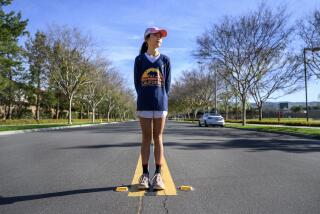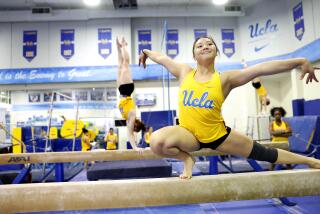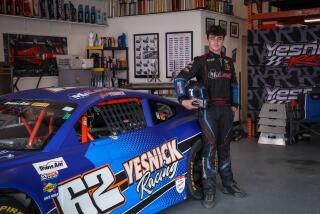Designing the ultimate bobsled for BMW
The gig: Michael Scully is creative director of global design for BMW Group DesignworksUSA in Newbury Park. So it’s fitting that a car designer who grew up in snowy New Hampshire would be assigned this latest BMW project: building a bobsled for the U.S. Olympic team. Usually, BMW doesn’t want its vehicles to slide freely on ice. But that’s exactly Scully’s goal now as he designs the two-man bobsled to compete in the Winter Olympics in Sochi, Russia, next year. He’s also worked on other projects for BMW since he joined the design team in 1996, including developing bicycle components and designing race cars.
“In my private life, I am heavily involved in car racing,” Scully said. “It is seldom in real life where you get a project where your private passion coincides with what you get to do on a daily basis. It is exciting to work on stuff that combines interests.”
Winter sports: Scully, 41, landed the bobsled assignment in part because he had experience in competitive winter sports and wasn’t a typical Southern Californian who looks with fear at the idea of sliding across ice and snow.
As a teenager Scully was a sponsored racer for the Burton Snowboard team. “It was racing, not the freestyle tricks and all,” he said.
“The bobsled project combines car racing and alpine sports. You are still racing trying to eke out those hundredths of a second. Speed is the ultimate goal.”
Stumbling into design: Scully’s parents, an uncle and two grandfathers were all in some aspect of architecture.
“Instead of doing a building, I wanted to do a car,” Scully said.
His first semester at what is now Roger Williams University in Rhode Island was not a success. Scully wanted to build a race car instead of going to class. He got the go-ahead from his father with one condition: “I had to stay in school and find something that would link to the future. I took a sculpture class and discovered I really like creating things in form,” said Scully, who now lives in Malibu.
His father told him he could combine his creative and building skills in a design career. “It was an epiphany. I got my act in gear,” Scully said.
He enrolled at Carnegie Mellon University in Pittsburgh, where he earned a bachelor’s degree in industrial design.
Car racing: Scully got his start in the car racing business through an apprenticeship at Johnson Engineering Motorsports in Providence, R.I. He joined BMW soon after that and learned he liked to both build and race cars. He designed the Formula BMW single seater and the BMW H2R, which set nine world speed records for a hydrogen-powered car. In his spare time, Scully races cars he has built and designed on his own — confiding that some don’t even use BMW engines.
“I have the track record at Laguna Seca for the D sports racer class,” Scully said, referring to the raceway near Monterey, Calif. “It has a corkscrew [turn] that feels like you are taking a very fast elevator down. Everything drops out from under you, and there is a moment when you can only see the horizon and not the track.”
Previous bobsled experience: “None, I just watched it on TV,” he said.
But you can’t design a world class bobsled without trying it at least once, which he did two years ago at Lake Placid, N.Y., site of the 1932 and 1980 Winter Olympics.
“I have this experience with these race cars, so I thought I could handle it,” he said. “About halfway down I stuck my head out to try to see the white ribbon of the track and where we where going, but I had to go into survival mode and put my head between my legs. I was really fearful that I was going to be that guy you give a corporate ride to and who then throws up. I don’t know I would do it again.”
But Scully sees the bobsled project as one of his most fulfilling because, “it has a deep level of meaning and consequence. We are not trying to sell more products. We are trying to facilitate an athletic endeavor.”
Lesson learned: Scully said he doesn’t think one can design a competitive-level bobsled without taking that ride. He said it gave him firsthand experience about the harshness of the track and the environment in which the sled must perform. That gave him important information about how robust the construction should be and how to dampen the outside influences so that he could “quiet the chaos” and allow the driver to focus on guiding the sled.
Unfulfilled goal: “I would love to design a sports car to race at the 24 hours of Le Mans. That would be incredible.”







